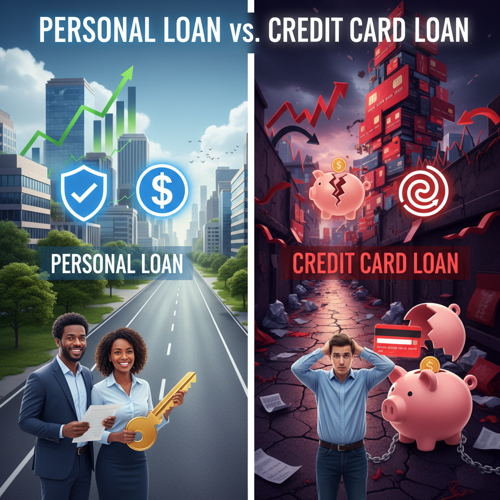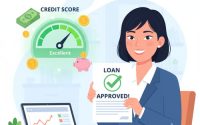Personal Loan vs. Credit Card Loan – Which One is Right for You?
Personal Loan vs. Credit Card Loan – Which One is Right for You? A Comparative Guide for 2026

Introduction: Navigating Consumer Debt Wisely (US Focus: 2025 & Planning for 2026)
Consumers frequently face unexpected financial needs or large planned expenses. They often turn to two primary financing options: Personal Loans and Credit Card Loans (either through a cash advance or carrying a revolving balance). Both provide immediate access to funds. However, the cost, the structure, and the impact on credit health differ dramatically. Choosing the wrong product can cost thousands of dollars in unnecessary interest.
In 2025, high interest rates increase the stakes of this decision. Borrowers must understand the mechanics of each debt type. This comprehensive guide provides a detailed comparison between Personal Loans and Credit Card Loans. It identifies which option is superior for different financial goals. It outlines the crucial factors determining the true cost of borrowing. This resource provides a strategic blueprint for making smart borrowing decisions in 2025 and maximizing financial health throughout 2026.
## Personal Loan Defined: Structured, Fixed-Term Debt
A Personal Loan provides a lump sum of money upfront. It is an installment loan. The borrower repays the amount, plus interest, over a fixed schedule (typically 2 to 5 years).
Key Characteristics:
- Fixed Interest Rate: The interest rate (APR) is set at the time of origination. It remains constant throughout the loan term. This provides predictable monthly payments.
- Lower APRs: Personal Loan APRs typically range from 6% to 30%. The rate depends heavily on the borrower’s credit score. They are almost always lower than credit card APRs for borrowers with good credit.
- Specific Use: Often used for debt consolidation, home improvements, or financing major life events (e.g., weddings, medical bills).
- Secured vs. Unsecured: Most Personal Loans are unsecured (no collateral). Some lenders offer secured options using savings or CD accounts.
## Credit Card Loan Defined: Revolving, Flexible Debt
A Credit Card provides a revolving line of credit. A “Credit Card Loan” occurs when a borrower uses the card for purchases and carries a balance month-to-month. Cash advances are another form of high-cost loan.
Key Characteristics:
- Revolving Balance: The balance can be paid down and re-used repeatedly, up to the credit limit. There is no fixed end date.
- High APRs: Credit Card APRs are typically much higher, often ranging from 18% to 30% or more. The interest compounds daily.
- Minimum Payment Trap: Paying only the minimum amount extends the repayment over many years. This significantly increases the total interest cost.
- Cash Advances: Taking a cash advance incurs an immediate fee (3% to 5% of the amount) and a separate, higher interest rate that accrues immediately. Avoid cash advances.
## Personal Loan vs. Credit Card: A Direct Comparison
The key differences lie in cost, structure, and predictability.


